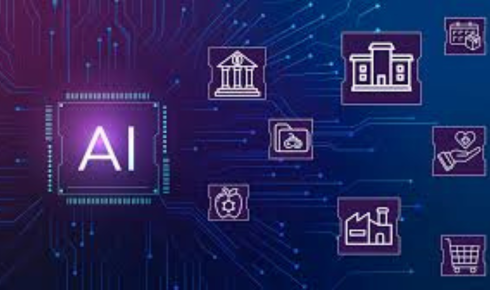In the dynamic landscape of artificial intelligence, Large Language Models (LLMs) like GPT-4 and their successors are fundamentally transforming how organizations approach workflow automation. These advanced models are not just reshaping the way we interact with computers but redefining business processes for scalability, efficiency, and competitive advantage. As the backbone of modern enterprise AI solutions, LLMs empower businesses to move beyond rigid, rule-based automation and embrace intelligent, context-aware process orchestration. In this article, we’ll explore the pivotal role LLMs play in AI workflow automation, their transformative applications in the enterprise, real-world use cases, and future trends shaping the next wave of intelligent automation.
Understanding the Foundation: What Are Large Language Models?
At the core, LLMs are deep learning models pre-trained on massive volumes of text data. They’re designed to understand, generate, and manipulate human language with near-human fluency. Leveraging sophisticated architectures (such as transformers), LLMs can perform various tasks—from simple language translation to complex reasoning—making them extraordinarily versatile in automation scenarios.
In the context of an enterprise AI platform, LLMs are integrated as foundational building blocks. They go beyond text processing, acting as intelligent orchestrators that bridge the gap between unstructured data (like emails and chat logs) and actionable automated workflows. But how exactly are they revolutionizing workflow automation?
LLMs and AI Workflow Automation: Transforming the Enterprise
1. Natural Language Understanding (NLU) for Seamless Task Initiation
Instead of requiring users to input rigid commands, LLMs interpret instructions written in natural language. They decipher intent, extract context, and distill critical information to trigger and shape downstream automation. This ability to “understand” not just keywords, but the nuances of conversation, is what makes LLM-powered AI agents such game-changers in workflow automation.
2. Natural Language Generation (NLG) for Dynamic Content Creation
The what is an ai agent discussion often highlights generated text as a signature function of LLMs. For workflow automation, this means:
- Automated reports and summaries: LLMs generate digestible overviews of workflow progress and data insights, reducing the manual burden on analysts and managers.
- Personalized communications: From custom email responses to customer notifications, LLMs tailor messages based on context, history, and user preferences.
- Documentation and training materials: LLMs transform technical documentation and step-by-step guides into clear, accessible learning tools, speeding up onboarding and process standardization.
3. Orchestration of Complex, Multi-Step Workflows
LLMs excel at acting as intelligent conductors in automated workflows. For example, an enterprise ai agent can:
- Interpret a user request (“Summarize this quarter’s sales data and send a report to the team”).
- Trigger a query to the relevant database or analytics engine.
- Extract and analyze data, summarize findings, and auto-generate a detailed report.
- Draft a personalized email attaching the report and send it to stakeholders.
This end-to-end orchestration delivers unprecedented efficiency—entire business processes can be automated with minimal human oversight and remarkable adaptiveness.
Key Areas Where LLMs Are Changing Workflow Automation
1. Intelligent Information Extraction and Data Transformation
Many organizations struggle with unstructured data: customer emails, support tickets, contracts, and reports. LLMs can extract structured information (like names, dates, issues, or sentiment) from these sources automatically. This powers downstream automation, such as updating CRMs, prioritizing tickets, or routing inquiries to the right department—no manual parsing required.
2. Powering Conversational AI, Chatbots, and Virtual Assistants
LLMs supercharge enterprise chatbots and virtual assistants, elevating customer support, internal IT helpdesks, and HR functions. These AI-powered assistants resolve queries, automate routine tasks, and even guide users through complex workflows, all through natural, contextual conversations.
3. Tailored Automation in Functional Domains
- Customer Service: Automate responses to FAQs, triage issues, and generate personalized support resources.
- Sales & Marketing: Compose engaging outreach emails, update customer records based on conversations, and generate data-driven campaign content.
- HR & Recruitment: Screen resumes, automate scheduling, generate onboarding materials, and even conduct preliminary candidate assessments.
- Data Analysis: Extract insights from complex datasets, create executive summaries, and automate business intelligence reporting.
- Content Creation: Generate blog posts, product descriptions, and social media updates at scale, all while maintaining brand consistency.
Benefits: Why LLMs Are the Future of Workflow Automation
- Unmatched Efficiency: Routine tasks are executed rapidly and at scale, freeing knowledge workers for higher-order strategic work.
- Consistent Accuracy: LLMs minimize human error, delivering greater consistency in critical business processes.
- Significant Cost Savings: Automation slashes operational costs, especially in labor-intensive, high-volume functions.
- Limitless Scalability: LLM-powered automations can adapt to spikes in demand without incremental hiring or resource allocation.
- Superior Customer Experience: Faster responses, personalized journeys, and 24/7 service become possible for customers and users alike.
Addressing Challenges and Responsible Deployment
While LLMs deliver remarkable value, organizations should remain mindful of several challenges:
- Data Privacy and Security: Sensitive data must be handled carefully to prevent unauthorized exposure or misuse within automated processes.
- Bias and Fairness: LLMs can imitate or amplify biases present in their training data, necessitating rigorous evaluation, auditing, and corrective measures.
- Explainability: As LLM-driven outputs can be complex, businesses should invest in mechanisms for transparency and traceability—especially in regulated industries.
- Computational Demands: Large-scale LLM implementations may require significant infrastructure and optimized deployment strategies to manage costs.
Choosing an enterprise ai agent that prioritizes explainability, compliance, and robust data management is essential when integrating LLMs into mission-critical workflows.
Looking Ahead: The Future Impact of LLMs on Workflow Automation
The rapid evolution of LLM capabilities signals a new era for enterprise automation. As model architectures improve, real-time reasoning, multi-modal understanding (combining text, image, and voice data), and self-optimizing workflows will become the norm. LLMs will enable hyper-personalized automation, where every user interaction dynamically tailors workflows for optimal outcomes.
Forward-thinking organizations are already embedding LLMs in their digital transformation strategies, connecting them with ERP, CRM, and industry-specific platforms. The result? Agile enterprises that can respond to market shifts, regulatory changes, and customer demands with unmatched speed.
Frequently Asked Questions
- What is a Large Language Model (LLM) in the context of AI workflow automation?
LLMs are sophisticated AI models trained on extensive text data to understand and generate human-like language, automating complex workflows that previously required manual intervention. - How do LLMs improve efficiency in enterprise workflows?
LLMs automate routine and repetitive tasks such as information extraction, report generation, and customer communications, freeing up human resources for strategic initiatives. - Can LLMs be integrated with existing business systems?
Yes, LLMs can be seamlessly connected to CRMs, ERPs, and databases, acting as orchestrators that automate and optimize data-driven processes across platforms. - Are LLM-powered automations secure?
Security depends on deployment and governance. Utilizing enterprise-grade platforms and following best practices in data privacy helps ensure safety and compliance. - What are the main challenges of using LLMs in workflow automation?
Key challenges include managing bias, ensuring explainability, meeting data privacy requirements, and addressing the high computational costs associated with large-scale models. - Can LLMs help personalize customer experiences?
Absolutely. LLMs can analyze customer history and generate tailored responses, recommendations, and content for individualized engagement at scale. - What is an enterprise ai agent?
An enterprise AI agent is a sophisticated automation tool powered by LLMs and other AI technologies, capable of understanding and executing complex business tasks autonomously. - How do LLMs handle unstructured data?
They convert unstructured text into structured, actionable insights, enabling automated decision-making and integration with analytics workflows. - Is specialized training required to use LLM-powered automation?
While advanced customization may require technical know-how, many enterprise platforms offer user-friendly interfaces to design and deploy LLM workflows without extensive coding. - What industries are benefiting most from LLM-based automation?
Industries such as finance, healthcare, retail, logistics, and customer service are using LLM-powered automation to streamline operations, enhance customer interactions, and gain competitive advantages.
The Path Forward: Embracing LLMs for Next-Generation Automation
Large Language Models aren’t just moving the needle on what’s possible with AI—they’re redefining the entire automation paradigm for enterprises. By bridging the gap between human knowledge and digital processes, LLMs empower organizations to unlock efficiencies, drive innovation, and respond proactively to emerging challenges. As these models continue to evolve, businesses willing to invest in robust, ethical, and integrated LLM-powered solutions will find themselves at the forefront of the intelligent automation revolution.

